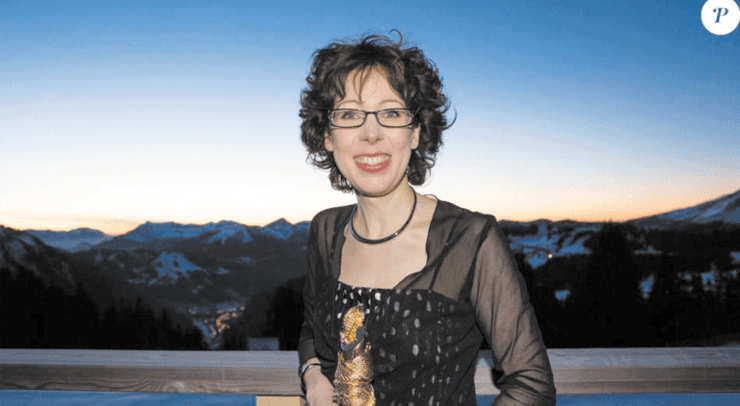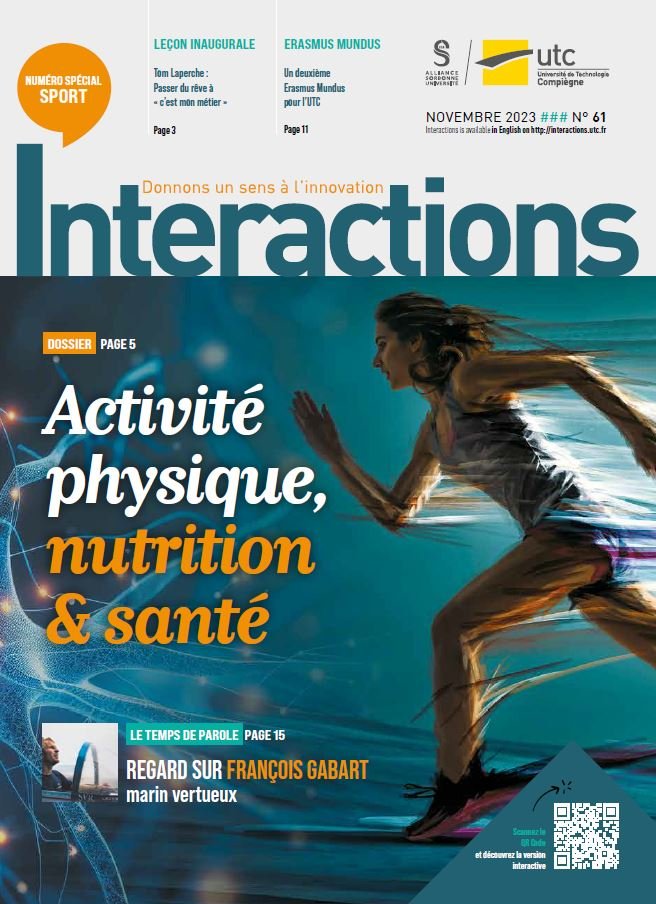
Anne-Virginie Salsac, a specialist in fluid bio-mechanics at the CNRS who works at the UTC-BMBI Lab. (Bio-Mechanical & Bio-Engineering) was nominated December 2015 as “2015 Woman in Gold — Innovation”. This reward came as a surprise to Anne-Virginie and in all humility she used the notoriety of the event to vehicle a few messages about her sense of commitment to scientific research and the demanding context of science today and in terms of possible applications to the world of medicine.
This particular Gold, you will not find it by digging in the cellars under UTC or by panning the sand-beds of the Oise river. But at UTC, what is precious is not always “mineral” but often of a more “human stuff”. December 12, 2015, Gold took the form of a lady scientist, Anne-Virginie Salsac, elected “2015 Woman in Gold — Innovation”.
At the age of 38, this CNRS research scientist is not only an internationally reputed specialist in fluid bio-mechanics applied to the domain of blood vessels in particular and to biomedical engineering in general, but someone who is committed and sensitive to herwork and scientific issues. These qualities, taken together, won over the jury of this 23rd edition ofthe ‘Women in Gold’ event — which consists of awarding a series of trophies to women who up hold demonstrably some essential values. The award to women like navigator Isabelle Autissier (Womanin Gold — Heart in Hand) or Agnès Troublé (line“Agnès B.” (Woman in Gold — Style), the Prizes(created in 1993) are given to persons who displayessential, universal values such as generosity orsolidarity.
Trophy for Innovation … and also for the public
Anne-Virginie Salsac admitted she was surprised when the Trophy organizers informed her she had been preselected and even more surprised when she received the invitation to attend the Trophy Ceremony Dec. 12 in Avoriaz (French Alpine station). “The fact that I had been selected by theJury seemed incredible but getting the Publicaward too was a total surprise”, explains ourresearch scientist. Explanation — on the day for the ceremony, the public is also invited to vote via Internet.
For Anne-Virginie Salsac, “this further consecration shows that the public is concerned by science and research and more especially when it comes to thematics in health-related areas”.
Making science attractive and equitable
For several years now, it has been observed inall OECD member countries that the fraction of students who register for science and/or technological course is regularly decreasing. “Our younger people seem less and less attracted by sciences. But if through these Trophies the young people (especially women) were able to discover the passion that lies in a research worker’s career and chose to go for a job here, then we would have won our bet: to transmit a beautiful virus, that sparks discoveries!”, explains the young Anne-Virginie Salsac.
And she goes on to underscore the importance of supporting and promoting inspired women who are happy to be at the cutting edge of their profession. “Even if we do see efforts made today to ensure equitable recruitment conditions between male and female candidates, there are stilllarge disparities in certain specialties”, she details. As a research scientist she deplores this situation,all the more so that there is a strong erosion factorin the male-female career paths.
“It is importantthat the young women can project themselvesin research jobs and fond satisfaction there. The research world can only prosper in having diversity and plurality. It is our mission to cultivate these!“underlines Anne-Virginie Salsac.
Facilitating appropriation bymedical professional spheres
Each day that passes brings new challenges for the research teams, “but many other challenges still remain in the field of fluid biomechanics to better understand the complexity of the human body and to continue to develop new diagnosis technologies and therapies to meet tomorrow’s needs”, saysAnne-Virginie Salsac. Medical practitioners often make use of anatomic data, such as MRI imaging,ultrasonic images, but far less biomechanical data. It is therefore important to make the new tools available for practitioners who are nonspecialistsand to inform the medical communityabout progress made in this specialty. Dr Salsac has specialized in vascular mechanics and gives the example of congenital, abnormal vessels that interconnect arterial and venous blood circuits– and here it is possible to patch the leak with “surgical glue”.
“Our lack of information about the mechanisms and the possible chemical reactions of this particular glue with blood and blood vessel walls is a brake to further development of the gluing technique under clinical conditions and the training of young radiological surgeons”, explains our research scientist.In a wider context, Anne-Virginie Salsacemphasizes how important it is to exchange among the specialties involved in order to be able to understand complex, interdisciplinary issues. Overand above fluid and solid mechanics, mass transfers or biochemical reactions … there are numerous specialties and the realty is often multi-physics inessence.
In such a scientific vista, “it is absolutely necessary to go beyond the classic specialty boundaries and to merge both experimental and digital approaches”, underlines Anne-Virginie Salsac who also insists that digital modelling tools be made accessible to the practitioners them selves.Will this be as a Woman in Gold or as a scientist at the forefront of the challenges and methods used in modern research? Anne-Virgie is no doubt partly one, partly the other. And in all probabilityit was for this reason that the CNRS awarded her its 2015 Bronze Medal, thereby rewarding the undisputedly high level of her research work and professional track record.




